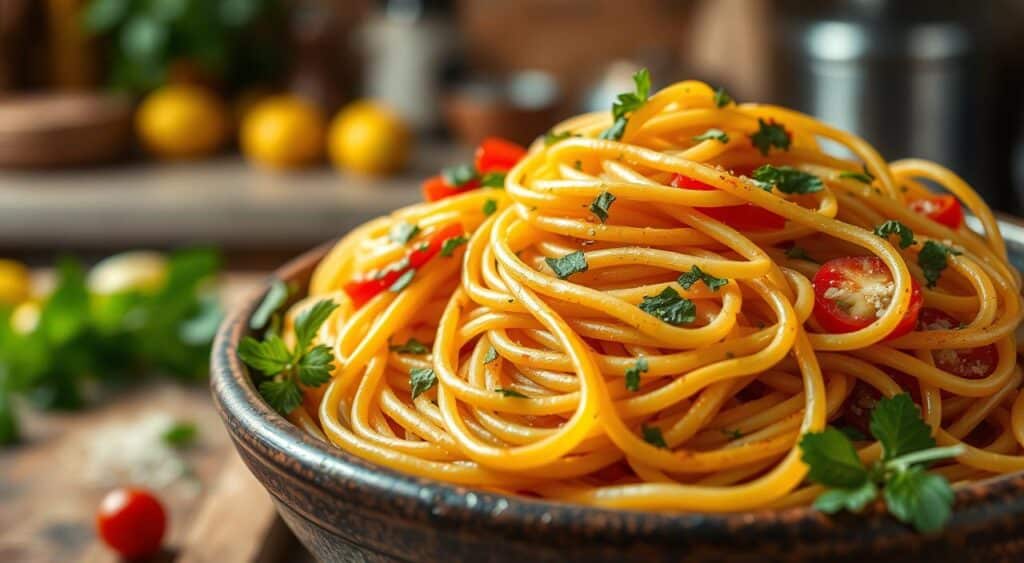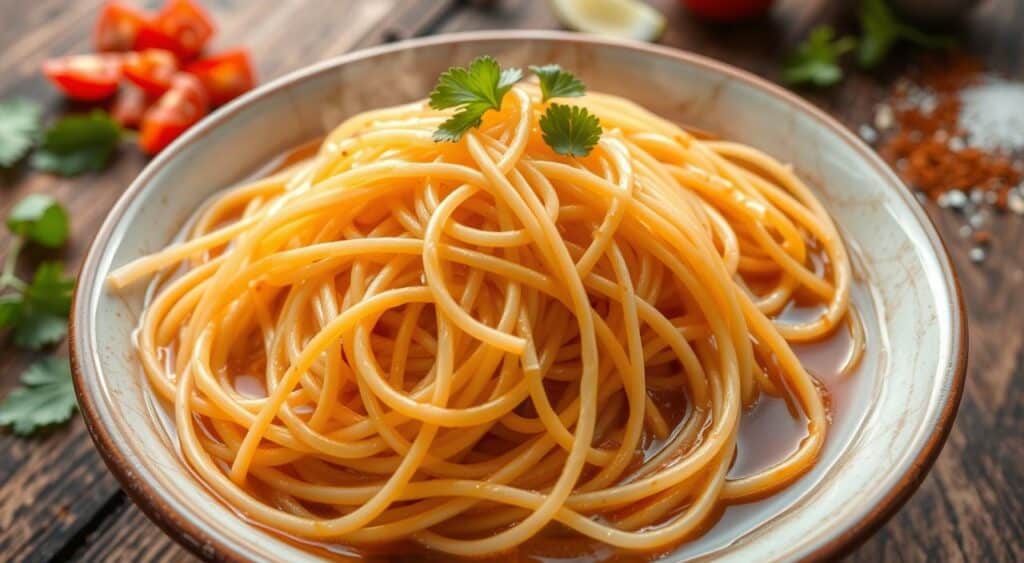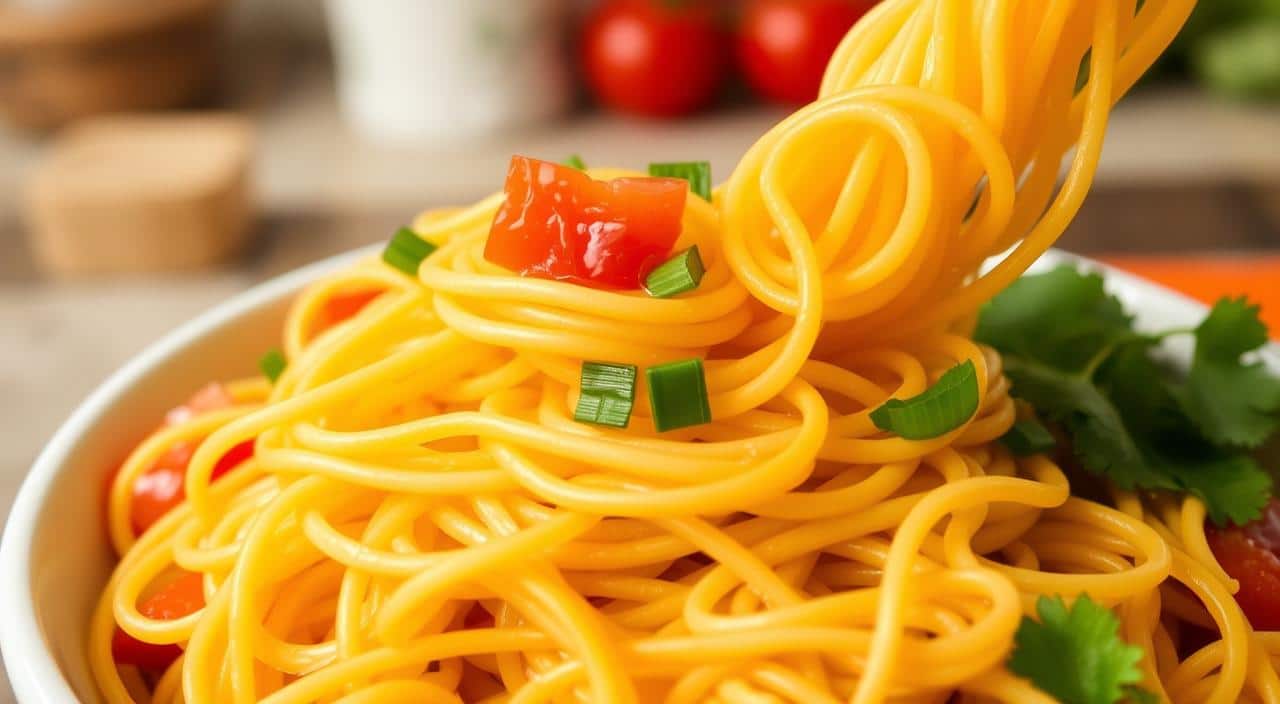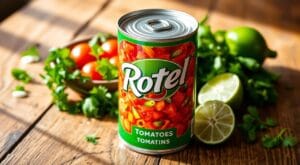Jump to:
Estimated reading time: 8 minutes
Table of contents
In the world of pasta, many varieties have developed over centuries. Each has its own history, ingredients, and uses in cooking. People often compare fideo, a traditional Mexican pasta, to Italian spaghetti. But is fideo just a cut version of spaghetti, or does it have its own identity?
We will look into the origins, ingredients, and special features of fideo and spaghetti. This will help us understand if they are the same or if fideo stands out on its own.
Is fideo just cut spaghetti? Key Takeaways
- Fideo is a traditional Mexican pasta, distinct from Italian spaghetti, with its own unique history and culinary uses.
- Fideo noodles are shorter and thinner than spaghetti, with a distinct round shape and bite-sized length.
- The preparation and cooking methods for fideo and spaghetti differ, leading to unique flavor profiles and dish applications.
- While fideo and spaghetti share some similarities in their base ingredients, they have evolved to become distinct pasta varieties with their own cultural significance.
- Fideo is an integral part of Mexican cuisine, with traditional dishes like sopa de fideo and fideo seco showcasing its versatility and importance.
Is fideo just cut spaghetti? Introduction
Fideo and spaghetti are two different types of pasta. They come from different culinary traditions. This article will explore their history, unique features, and how they relate to each other.
Sopa de fideo is a favorite in many Mexican homes. It’s quick to make, taking 20 to 45 minutes. It often includes chicken, pasta, tomato sauce, and spices like cumin and oregano.
Trade and colonialism tie the history of sopa de fideo. Pasta has been part of Mexican cuisine since the 16th century. It’s a dish that promotes using what you have on hand, making it a low-waste option.

Next, we’ll look at the origins, ingredients, and how to make fideo and spaghetti. We’ll also see what makes each unique. This will help us appreciate the rich diversity of global cuisine.
What is Fideo? Is fideo just cut spaghetti?
Fideo is a type of thin, short pasta loved in Mexican cooking. Its history links back to Mediterranean cultures like Italy and Spain’s influence on Mexico during the colonial era. It is a key ingredient in dishes like sopa de fideo (Mexican noodle soup), and people often serve it alongside main dishes.
Is fideo just cut spaghetti? History of Fideo
The roots of fideo lie in the Mediterranean, where short, thin noodles have been a staple for ages. Spanish and Italian settlers brought their pasta-making skills and ingredients to Mexico during the colonial era. They merged these with local Mexican dishes, creating fideo.
Is fideo just cut spaghetti? Traditional Uses of Fideo
Fideo is a versatile ingredient in Mexican cooking, often used in Mexican pasta dishes and soups. The most famous dish with fideo is sopa de fideo. It’s a hearty noodle soup with toasted fideo noodles, a rich broth, and various vegetables and proteins.
Is fideo just cut spaghetti? How Fideo is Made
People make fideo by cutting long spaghetti into shorter pieces and toasting them in oil. Then, they cook them in a flavorful broth. This method gives fideo its unique texture and intense flavors, making it soak up the broth and seasonings well.

What is Spaghetti?
Many people around the world love spaghetti, a favorite Italian pasta. It comes from the Mediterranean, and people have enjoyed it for centuries. Made from durum wheat flour and water, they shape it into long, thin strands.
Origin of Spaghetti
The exact start of spaghetti is a topic of debate. Yet, people think it came from ancient Mediterranean cultures like Italy, Greece, and the Middle East. For thousands of years, people in these areas have eaten pasta-like dishes made from wheat flour.
Common Spaghetti Dishes
Spaghetti is key in many Italian classics, like spaghetti bolognese, carbonara, and alle vongole. These dishes show how versatile spaghetti is. It goes well with many sauces, proteins, and veggies.
How Spaghetti is Made
Making spaghetti involves a dough of durum wheat flour and water. Then, people push this dough through a die to form the long strands. After drying, they can package and share it.
Spaghetti is a big part of Italian food and loved globally. People know it for its simplicity, flexibility, and tasty flavor.
Differences Between Fideo and Spaghetti
Fideo and spaghetti are both pasta types, but they differ in shape, size, cooking methods, and dishes.
Shape and Size
Fideo noodles are shorter and thinner than spaghetti. They look like cut-up spaghetti pieces. Spaghetti, however, is long and slender, keeping its shape.
Cooking Methods
People toast fideo in oil before cooking it in broth. People boil spaghetti in water.
Typical Dishes and Uses
People use fideo in Mexican dishes like sopa de fideo, a tomato-based noodle soup. You find spaghetti in Italian dishes, such as spaghetti bolognese and spaghetti carbonara.
“Fideos means ‘noodles’ in Spanish, and in parts of Mexico and the U.S., fideos are typically prepared in sopa de fideo. In Spain, fideos are featured in a dish called fideuà.”
In summary, fideo and spaghetti are both wheat-based pastas. But their unique qualities make them fit for different cuisines and dishes.
Similarities Between Fideo and Spaghetti
Fideo and spaghetti may look different and have unique uses, but they share many similarities. People make both from durum wheat flour and water. This makes them similar at their core.
Base Ingredients
The main ingredients of fideo and spaghetti are very similar. They both use durum wheat flour for their structure and texture. People add water to mix these ingredients into dough, then shape it into noodles.
Nutritional Comparison
Fideo and spaghetti have similar nutritional profiles. As pasta-based foods, they offer complex carbohydrates for energy. They also have moderate protein, vitamins, and minerals, making them good for your diet.
Cooking Versatility
Fideo and spaghetti are very versatile in cooking. You can use them in soups, stews, sauces, and casseroles. This versatility lets cooks easily add them to many dishes, showing their value in cooking.
Why Fideo is Not Just Cut Spaghetti
Fideo and spaghetti may look similar, but they are not the same. Fideo has its own special place in Mexican culture. It has unique flavors and cooking methods that make it stand out.
Regional Importance
Fideo is a key ingredient in Mexican cooking. It’s a thin, toasted noodle that people in Mexico love. In Spain, fideos come in different shapes and sizes, all cut into short strands.
The way people cook fideo is special. They toast it in oil, which gives it a unique taste. This cooking method is a big part of Mexican dishes.
Cultural Significance
Fideo is deeply connected to Mexican culture. The toasting of noodles in oil is a key step. It makes the dish taste like home to many Mexicans.
Traditional dishes like sopa de fideo are favorites in Mexican homes. They show how important fideo is in Mexican food.
Unique Preparation Styles
Fideo is prepared differently than spaghetti. The pasta is toasted until it’s lightly browned. This gives it a nutty flavor.
The pasta is then simmered in a special broth or sauce. This lets it absorb all the flavors. This method makes fideo taste unlike any other pasta.
In summary, fideo is more than just a Mexican version of spaghetti. It’s a unique pasta with its own history, flavors, and cooking ways. These make it a big part of Mexican cuisine.
Frequently Asked Questions
Many people wonder about the connection between fideo and spaghetti. Let’s clear up some common questions.
Is Fideo Just Cut Spaghetti?
No, fideo is not just cut spaghetti. They share some ingredients, but they’re different. Fideo noodles are shorter and thinner, with a round shape.
What is the Difference Between Fideo and Spaghetti?
Fideo and spaghetti differ in shape, size, and use. Fideo is used in soups, while spaghetti is for pasta dishes.
How Are Fideo Noodles Made?
Fideo noodles come from a dough of semolina flour, water, and sometimes egg. The dough is shaped into short, round pieces.
What Are Some Traditional Fideo Dishes?
Sopa de Fideo (Fideo Soup): A favorite dish in Mexico and Tex-Mex, made with fideo noodles in a tomato broth.
Fideo con Camarones (Fideo with Shrimp): A Spanish dish with fideo noodles, sautéed shrimp, and spices.
Fideos Tostados (Toasted Fideo): Fideo noodles fried until crispy, used as a topping.
Can Spaghetti Be Used in Place of Fideo in Recipes?
Spaghetti can substitute for fideo in some recipes. But, it changes the dish’s texture and taste. For the best fideo taste, use the real fideo noodles.
Conclusion
Fideo and spaghetti may look similar, but they are truly different. Fideo has its own history, uses, and ways of making it. It’s not just cut-up spaghetti because of its deep roots in Mexican cuisine.
Exploring the differences between fideo and spaghetti helps us appreciate global food traditions. Fideo comes from Spain and is loved in Mexico and Latin America. It has a special taste and texture that spaghetti can’t match.
The way fideo is toasted gives it a unique flavor. This makes it stand out from the softer spaghetti. It’s important to see fideo as a special part of Latin American food, not just a version of spaghetti.






